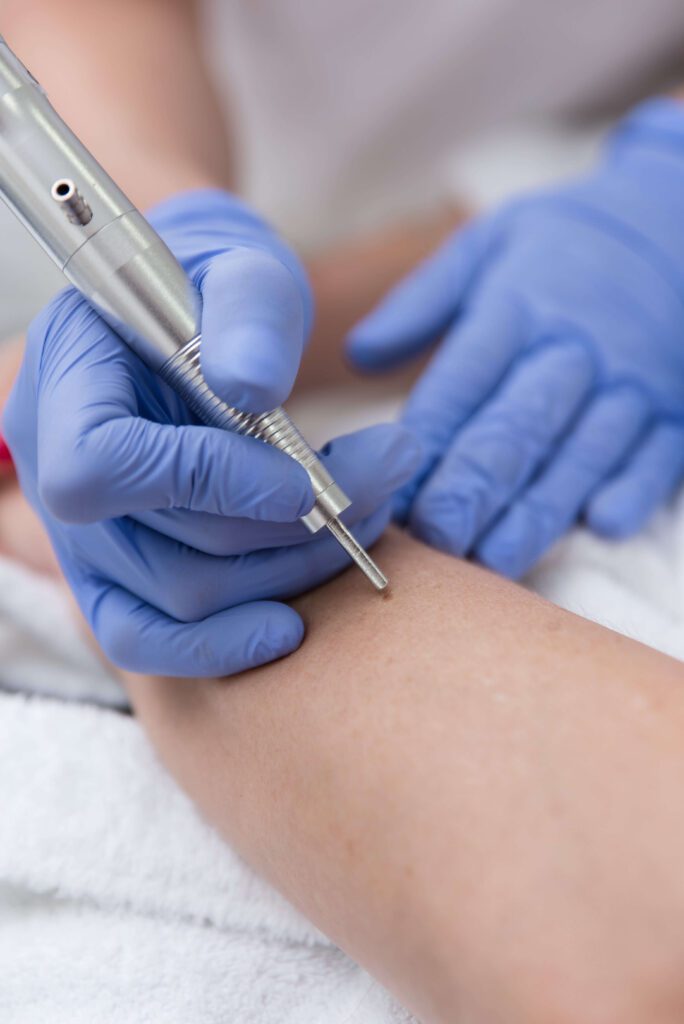Removal of Benign Skin Changes
Various benign skin changes can occur due to sun damage, hormonal imbalances, clogging of sweat gland ducts, accumulation of fats under the skin, aging of the skin, formation of excess connective tissue, or viral activity. The most common benign skin changes are solar lentigines, seborrheic keratoses, fibromas, syringomas, xanthelasmas, sebaceous gland hyperplasia, viral warts, and keloids.

Treatment
The medical non-ablative device Plasmage is a unique device that works on the principle of plasma energy, enabling the treatment of various benign skin changes. Plasma energy represents the fourth state of matter containing ionized gas and is generated by an electric discharge at the tip of the applicator. The device has 6 power levels and 5 power modulation levels, ensuring individual adaptation for every condition. Prior to the treatment, a local anesthetic cream is applied to the skin for a painless procedure.
Advantages of Plasmage treatment include:
- Non-invasiveness (doesn’t require surgical interventions or stitches)
- Precision (curvature of the applicator electrode tip ensures more precise action)
- Safety (predetermined energy affects only the skin’s surface layer, avoiding residual scarring)
- Quick recovery time
- Visible results immediately after treatment
Benign skin changes can also be removed with fractional ablative CO2 lasers, which are considered the gold standard in ablative lasers. The effect is the removal of the skin’s surface layer (epidermis) and, depending on the type of change, deeper skin layers (dermis). This promotes healing, skin renewal, and complete removal of benign changes. The laser can remove various benign changes like fibromatous moles (above the skin level), warts, calluses, condylomas, syringomas, and rhinophyma. Before the treatment, an anesthetic cream is applied for 30-60 minutes, then removed. During the treatment, one might feel mild warmth and tingling.
Candidates
People with skin or body changes in the form of:
- Solar lentigines (brown, round sun spots)
- Seborrheic keratoses (brown to black warts that can itch)
- Fibromas (skin-colored “tags”)
- Syringomas (small skin-colored papules on the lower eyelids)
- Xanthelasmas (yellowish fat accumulation on the upper eyelids)
- Sebaceous gland hyperplasia (oily skin-colored papules on the face)
- Viral warts
- Keloids (hypertrophic, thickened scar)
- Rhinophyma
Results
Right after the treatment, for most changes, the skin issue disappears (solar lentigo, seborrheic keratosis, fibroma, syringoma) while for others, a small wound remains, which heals over a few days after which the result is visible (xanthelasma, keloids). For most indications, one treatment is needed, while some require repetition after 2 to 3 weeks.
Recovery
After the treatment, small wounds and scabs might remain, healing over a few days, so the treated area may be sensitive to touch. The treated area can be cared for with epithelizing creams for faster skin recovery. It’s also recommended to apply creams with a high protective factor to treated areas until the skin fully heals.